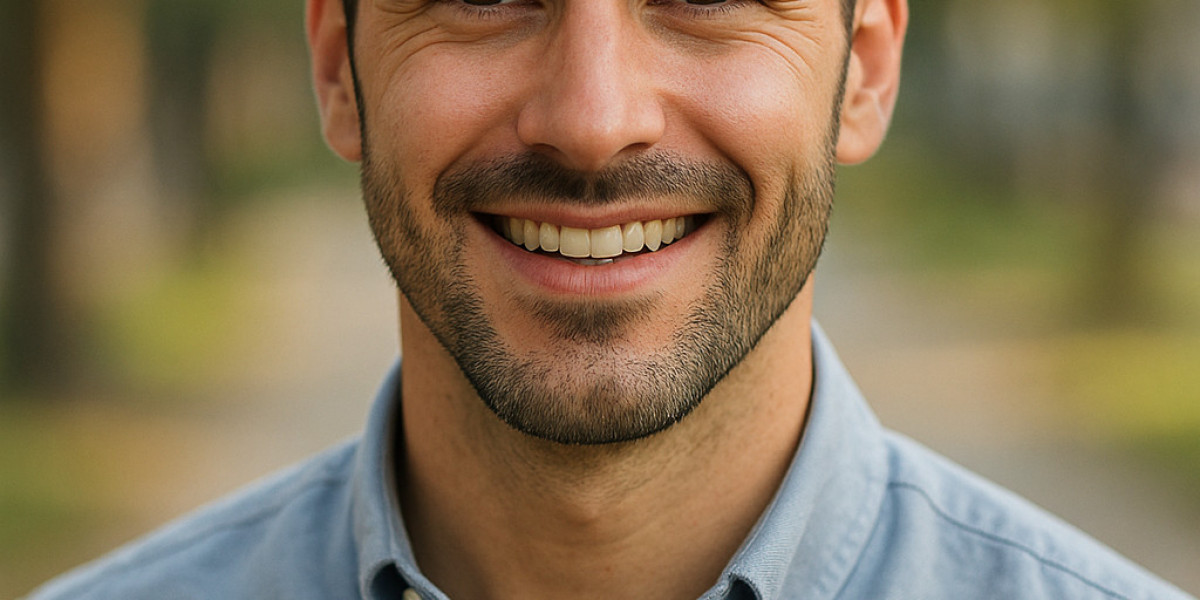Hair is more than just strands on your head; it's tied to your identity, confidence, and even your style. When hair loss starts, it can feel like losing a part of yourself. That’s why many people today turn to hair transplant surgery. With modern methods, it’s safer, natural-looking, and effective.
According to the International Society of Hair Restoration Surgery (ISHRS), demand for hair restoration has increased by over 20% in the last three years. More men and women are seeking solutions, proving that this isn’t just about looks it’s about self-esteem and quality of life.
What is a Hair Transplant?
A hair transplant is a medical procedure where doctors take healthy hair follicles from one part of your body (usually the back of the scalp) and move them to thin or bald areas. Think of it like “replanting” hair seeds into areas where the ground is empty.
This is not a wig or artificial hair. It’s your own natural hair, which keeps growing for life.
Why Do People Choose Hair Transplant Surgery?
Confidence boost: Restoring a hairline makes people feel younger.
Permanent solution: Unlike hair creams or oils, results last for years.
Natural results: Modern methods make transplanted hair look like your real hair.
Medical recommendation: Many dermatologists suggest transplantation when medications don’t work.
Main Hair Transplant Techniques
1. FUE (Follicular Unit Extraction)
Doctors remove individual hair follicles with tiny punches.
Leaves almost no visible scars.
Healing time is faster.
Ideal for people who like short hairstyles.
2. FUT (Follicular Unit Transplantation)
Also called the “strip method.”
A narrow section of scalp is taken from the back, and the hair follicles are carefully separated and implanted.
Can move many grafts at once, but may leave a linear scar.
3. DHI (Direct Hair Implantation)
Uses a Choi implanter pen.
Follicles are implanted directly without creating channels first.
Great for achieving higher density in smaller areas.
Tip: Many surgeons suggest FUE for younger patients and FUT for cases needing more grafts. Always discuss which option is best for you.
Hair Transplant for Men vs. Women
Hair loss is not just a man’s problem. In fact, ISHRS reports show over 15% of hair transplant patients are women today.
For men: Usually used to restore the front hairline and crown.
For women: Helps with thinning, traction alopecia (from tight hairstyles), or patchy loss.
The Cost of Hair Transplant in 2025
Costs vary by country, clinic reputation, and number of grafts.
Dubai: Around AED 8–12 per graft. Average full procedure: AED 10,000–20,000.
Pakistan: PKR 75,000–200,000, depending on city and surgeon.
Turkey: USD 2,000–4,000, often with medical tourism packages.
For more cost insights, check this trusted resource on hair transplant.
Recovery After Hair Transplant: What to Expect
Day 1–3: Mild swelling, redness, and bandages.
Day 4–7: Scabs form around transplanted follicles.
Week 2: Shedding begins (this is normal).
Months 3–4: New hairs start to grow.
Months 9–12: Full results are visible, with natural thickness.
Doctors recommend avoiding sun exposure, heavy workouts, and hats in the first weeks.
Surgeon Opinions & Safety Checks
Top hair restoration surgeons in Dubai stress that safety should always come before price when choosing a clinic. Patients are advised to:
Always check if the clinic is licensed by the Dubai Health Authority (DHA) or other relevant medical boards.
Ask about the surgeon’s membership in the International Society of Hair Restoration Surgery (ISHRS) or equivalent professional bodies.
Be cautious of offers that sound “too good to be true.” Ultra-cheap packages may risk poor hygiene, unqualified staff, and long-term health issues.
Dr. John Cole, a respected hair restoration surgeon, explains:
“The surgeon’s skill is more important than the method. A carefully performed FUT can give better results than a poorly executed FUE.”
Benefits Beyond Looks
Psychological boost: Studies show people feel more social and confident after surgery.
Professional image: Many patients say it improves self-image at work.
Easy upkeep: After recovery, transplanted hair grows naturally and doesn’t need extra care.
Risks and Side Effects
Even though it’s safe, side effects can include:
Swelling of the scalp and forehead.
Temporary numbness.
Rare infections if not cared for properly.
Shock loss (temporary shedding of nearby hair).
Most side effects disappear within weeks.
Future of Hair Transplant in 2025
Robotic tools are helping doctors work more quickly and with greater accuracy during surgery.
Scientists are studying stem cells to find ways to create and grow more hair follicles in the future.
Adjunct treatments like PRP (Platelet-Rich Plasma) are now widely combined to improve graft survival.
Hair loss can affect anyone, but with today’s advanced hair transplant methods, confidence can be restored. Whether you’re in Dubai, Pakistan, or anywhere else, choosing the right surgeon and method is the real secret. Don’t just chase low prices chase real results, safety, and trust.
FAQs on Hair Transplant
1. Is a hair transplant painful?
No, local anesthesia makes it painless. You may feel mild discomfort afterward.
2. How long does a hair transplant last?
Results are usually permanent because transplanted hairs resist balding.
3. Can women get a hair transplant?
Yes, women with traction alopecia or thinning hair benefit a lot from it.
4. What is the success rate?
Around 90–95% of transplanted follicles survive and grow.
5. How many grafts do I need?
It depends on your bald area. A full head may need 3,000–4,000 grafts.
6. When can I go back to work?
Most people return within 3–5 days after surgery.
7. Will it leave scars?
FUE leaves tiny dot scars, FUT leaves a linear scar, but both are usually hidden by hair.
8. Can I use minoxidil after a hair transplant?
Yes, many doctors recommend it to strengthen hair.
9. How soon will I see results?
New growth begins in 3–4 months, full results in 9–12 months.
10. Is it safe to fly after a hair transplant?
Yes, usually after 48–72 hours, but always follow your doctor’s advice.








